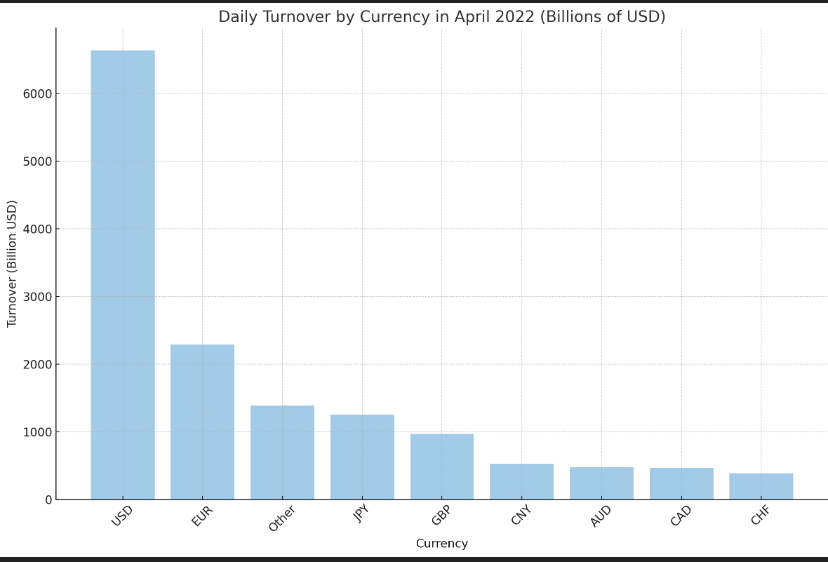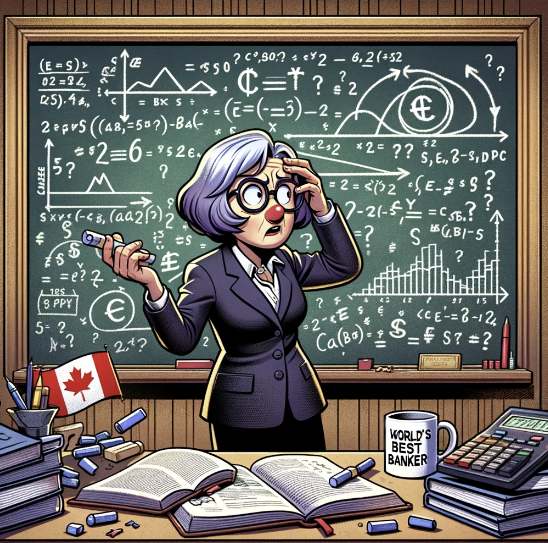
By Michael O’Neill
The airwaves are flooded with the pervasive come-ons for online betting sites. FanDuel, DraftKings, and Bet365 are paying huge money to ex-football and hockey stars to entice bettors to their sites. It’s working. The estimated annual turnover of betting in the United States exceeded $300 billion as of December 2023. The owners of these companies have wholly embraced the 16th-century adage that “a fool and his money are soon parted.” And apparently some of that parted money has found its way into the coffers of Denise Coates, the founder and joint chief executive of Bet365. She has an estimated net worth of $7.7 billion. Nevertheless, the on-line gambling sites are mere ripples in a puddle when compared to the global foreign exchange ocean.
It’s not James Bond’s Casino Royale
The FX market is often described as the world’s biggest casino. And for good reason. The April 2022 Triennial Central Bank Survey of Foreign Exchange reported a daily turnover of $7.5 trillion. To put it in perspective, the daily turnover in FX is more than 20 times the annual turnover of US betting.

However, the analogy comparing the FX market to a casino holds a significant amount of truth. That’s because of leverage. No betting sites are going to allow a punter to place a wager where the loss could exceed the stake. It’s very different in the foreign exchange world.
High Leverage in FX Trading
Where else could you place a bet (er…trade strategy) and use leverage of 25x to 50x times the size of the account. That means a person with a $2500 investment could book a $75,000-to $125,00 USDCAD trade. And if they happened to have an account with a broker in the Cayman Islands, the position could be as large as $1.25 million.
Foreign Exchange: A Cash Cow for Banks
Foreign Exchange is a cash-cow business for the global banks. The worlds top 10 FX trading banks control about 68% of the entire FX daily volume and they make upwards of a combined $40 billion/year in FX profits. The bankers collect the cash while small to medium sized business and retail clients are the cows being milked. These people pay spreads from as little as 0.0001 to 0.350 points at the whim of a sales person. Can you say “moo?”

Banks Profit from Access, Not Just Trading Skill
The major banks, including the ones in Canada, are making a ton of money from foreign exchange and the bulk of those profits are not because they are awesome traders but because they control the access. The proof is not just in the pudding, but in the currency forecasts that they release quarterly and yearly. Those forecasts are right a little bit more than 50% of the time. If their trading profits were based on FX forecasts, it is safe to assume that they would be a lot lower.
That’s not to disparage any bank economist. They are usually a smart bunch of people. They get forecasts wrong because of the market complexity. FX prices are influenced by a multitude of factors, many of them unpredictable. Economic data, political events, central bank policies, and even investor sentiment can all impact currency valuation. Former Fed President Alan Greenspan said that despite the Fed having access to tons of data, FX models and economists, forecasting foreign exchange rates was not much different from flipping a coin.
Roll the Bones.
Consider this. On March 7, a Canadian bank predicted that USDCAD would trade at 1.2800 in the fourth quarter of 2024. Another bank is predicting USDCAD will be at 1.4300 by year end. Those levels are about 5% away from the current spot price of 1.3575. The option market agrees with the 0.1500 point range as 9 month volatility is also around 5%, which equates to a 5% gain or loss from 1.3575.
Who is going to be right?
Bank of Canada Deputy Governor Carolyn Rogers speech on March 24 provides some good arguments that favour a move toward 1.4300. She spoke about the need to fix Canada’s productivity problem and started off by saying she wanted to talk “about Canada’s long-standing, poor record on productivity.” She noted that Canada’s productivity significantly lagged behind that of its G-7 peers and its major trading partner, the United States.
“It’s the Economy”
She noted Canada’s underperformance in investment, particularly machinery, equipment, and intellectual property. She also noted inefficiencies in utilizing and developing the skills of new workers, particularly immigrants.
She was diplomatic and pointed out how Canadian business showed resourcefulness during the pandemic by adjusting business models and practices. She said the government is trying to improve labour composition through training and reskilling (huh?, gasoline engine mechanic is reskilled as a barista).
The problems are real, the solutions are mostly hypothetical, theoretical and not all that practical.

It gets worse, Canadian government debt finance spending has increased by nearly $1.0 trillion dollars under Justin Trudeau which according to the Fraser Institute represents nearly one in every two dollars of debt currently held by the federal government.
Canada is a country with ballooning federal spending, low economic growth rife with government polices that are anti-business. The decision to hike the carbon tax by 40% on April 1 (which is a 400% increase since 2019) is a growth killing, inflationary policy which will exacerbate the economic slowdown. The tax will raise prices directly and indirectly across the board and further hamper Canada’s ability to compete on world markets.
Get ready to roll the dice. In the FX Casino, Red is 1.2700 and Black is 1.4300..





